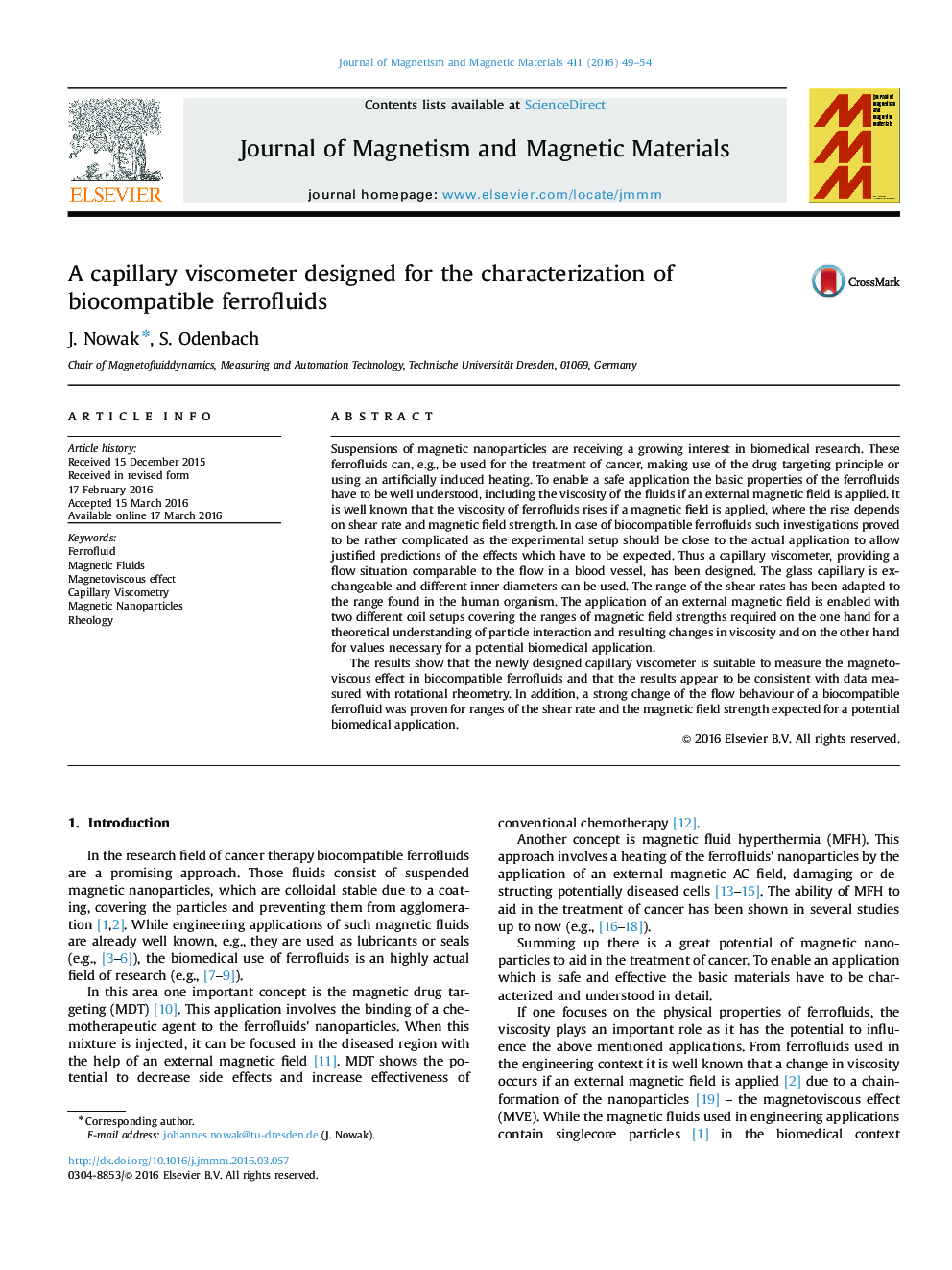| کد مقاله | کد نشریه | سال انتشار | مقاله انگلیسی | نسخه تمام متن |
|---|---|---|---|---|
| 1798110 | 1524810 | 2016 | 6 صفحه PDF | دانلود رایگان |

• A capillary viscometer to characterize biocompatible ferrofluids is presented.
• Shear rates and capillary diameters are adapted to values of potential applications.
• Despite the high shear rates strong magnetoviscous effects (MVE) are found.
• The results are readily comparable to results found using rotational rheometry.
• For strong magnetic fields an increasing MVE after an apparent saturation was present.
Suspensions of magnetic nanoparticles are receiving a growing interest in biomedical research. These ferrofluids can, e.g., be used for the treatment of cancer, making use of the drug targeting principle or using an artificially induced heating. To enable a safe application the basic properties of the ferrofluids have to be well understood, including the viscosity of the fluids if an external magnetic field is applied. It is well known that the viscosity of ferrofluids rises if a magnetic field is applied, where the rise depends on shear rate and magnetic field strength. In case of biocompatible ferrofluids such investigations proved to be rather complicated as the experimental setup should be close to the actual application to allow justified predictions of the effects which have to be expected. Thus a capillary viscometer, providing a flow situation comparable to the flow in a blood vessel, has been designed. The glass capillary is exchangeable and different inner diameters can be used. The range of the shear rates has been adapted to the range found in the human organism. The application of an external magnetic field is enabled with two different coil setups covering the ranges of magnetic field strengths required on the one hand for a theoretical understanding of particle interaction and resulting changes in viscosity and on the other hand for values necessary for a potential biomedical application.The results show that the newly designed capillary viscometer is suitable to measure the magnetoviscous effect in biocompatible ferrofluids and that the results appear to be consistent with data measured with rotational rheometry. In addition, a strong change of the flow behaviour of a biocompatible ferrofluid was proven for ranges of the shear rate and the magnetic field strength expected for a potential biomedical application.
Journal: Journal of Magnetism and Magnetic Materials - Volume 411, 1 August 2016, Pages 49–54